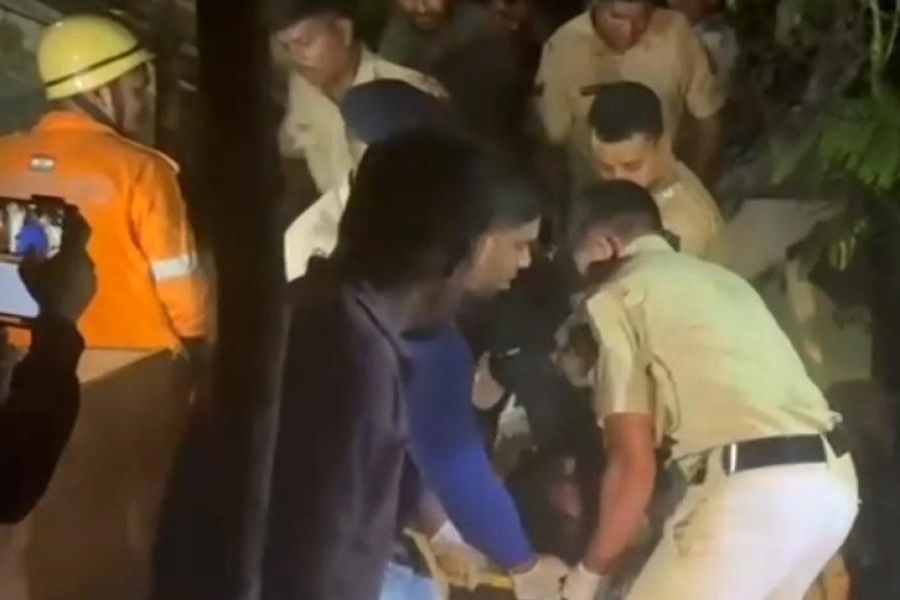A nearly 150-year-old book on monuments of Sanchi in Madhya Pradesh written in Urdu using calligraphy, and other rare original archival documents, including those related to the erstwhile nawabs of Bhopal have been put on display in the state capital as part of an exhibition hosted by the National Archives of India.
The book titled 'Tarikh-e-Sanchi' published in 1873 is an Urdu translation of a book originally published in English. The translation was done at the behest of Nawab Shah Jahan Begum of Bhopal, the then ruler of the princely state, officials said.
"This rare book with 630-odd pages, essentially a manuscript produced using calligraphy is a rare volume in our possession, which we have put on display for a day at our office in Bhopal as part of a day-long seminar being organised in the state capital today," a senior official of NAI (Bhopal) told PTI.
The site of Sanchi, a UNESCO World Heritage, comprises a group of Buddhist monuments. It is the oldest Buddhist sanctuary in existence and was a major Buddhist centre in India until the 12th century, the UNESCO website said.
The seminar titled 'Archives & Archaeology' is being hosted on Tuesday jointly by the NAI's regional office in Bhopal and the Archaeological Survey of India's Bhopal Circle.
"The National Archives and ASI, both of which function under the purview of the Culture Ministry, have come together, which will lend greater synergy between the two agencies, both of which deal with preservation and documentation of material and other heritage," said Sanjay Garg, NAI's Deputy Director of Archives.
As part of the event being held to mark the Azadi ka Amrit Mahotsav', some archaeological artefacts are also being exhibited on the occasion, he said.
N Raju Singh, Assistant Director of Archives at the NAI Bhopal said, the 'Tarikh-e-Sanchi' was translated from the original by a teacher Faiyazuddin Ahmad in 1873, "but we are not able to find yet the title of the book written in English and its author".
"Besides, we are also exhibiting the three volumes of the seminal work 'The Monuments of Sanchi' by John Marshall, and some of the rare correspondences and notifications associated with the erstwhile nawabs of Bhopal or the Bhopal State that earlier existed, among other documents," he said.
The Bhopal regional office has archival documents ranging in the period, largely from the 1840s to 1950s, and about 50 documents, including a few old books, have been put on display, officials said.
Some rare monochrome images of Bhopal's public buildings and places, which were put on display at NAI Bhopal, as part of a recent exhibition that started on October 13, 'Mahatma Gandhi and Bhopal', are also part of the display.
Rare images of 'Rahat Manzil', built in the early 20th century by the then Nawab of Bhopal, where Gandhi is said to have stayed during his visit to the then princely state have been put up on display, a member of the organising team said.
Old images of the iconic 'Benazir Palace', Bhopal station and 'Shokat Mahal' opposite Iqbal Maidan have also been exhibited, the member said, adding 'Rahat Manzil' was accidentally burnt down several decades ago.
Other archival documents on display include many official notifications issued in Urdu by the Bhopal state in the years soon after the Independence.
When India gained independence from the British, Nawab Hamidullah Khan was the ruler of Bhopal. In May 1948, an interim government was formed by the Nawab called Praja Mandal, which was dissolved on January 29, 1949, according to the Madhya Pradesh Raj Bhawan website.
A document related to the making of a Praja Mandal government by the Nawab of Bhopal, a gazette notification in Urdu by the Bhopal State announcing a holiday for schools and offices on August 15, 1948; a report dated January 31, 1948, sent to the central home ministry by the then prime minister of Bhopal Raja Owadh Narayan Bisariya on the situation there after the assassination of Mahatma Gandhi a day earlier, is also among the rare exhibits, Singh said.
Bhopal state was an independent state of 18th century India, a princely state of India from 1818 to 1947, and an Indian state from 1949 to 1956. Its capital was Bhopal city.
In 1956, along with Madhya Bharat and Vindhya Pradesh, it was merged into Madhya Pradesh and the city of Bhopal became its capital.
A gazette notification in Urdu dated October 26, 1948, announcing that the donations to the Mahatma Gandhi National Memorial Fund are exempted from income tax in Bhopal state; and speech (printed in Urdu) of the Nawab of Bhopal at Harijan Conference on June 3, 1948, are other rare archival documents on display.
"Besides, five papers will be presented as part of the seminar, by experts from NAI; RBI, Pune; and the ASI, besides, a history department faculty at a college in Bhopal," Singh said earlier in the day.
Sanjay Garg, NAI's Deputy Director of Archives, in his talk, emphasised the importance of archives in the field of archaeology.
"Some of the earlier period records associated with archaeology are found with various PWDs as public works departments used to carry out repair work at heritage sites," he said.
PTI










